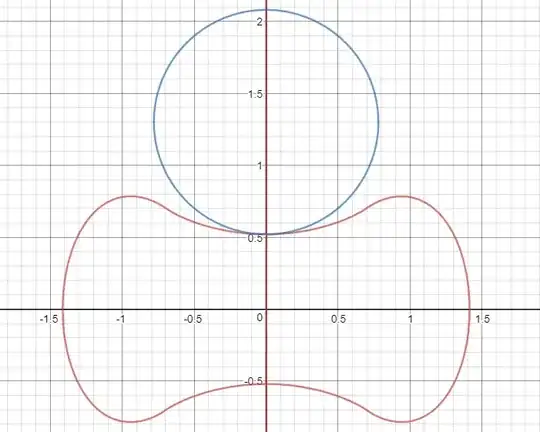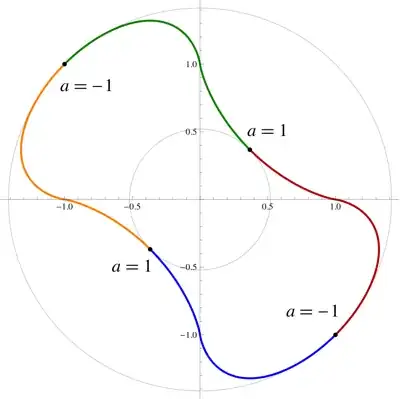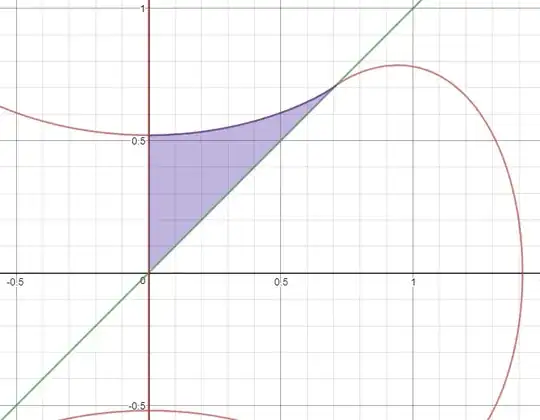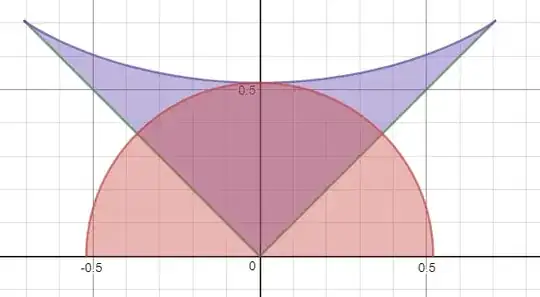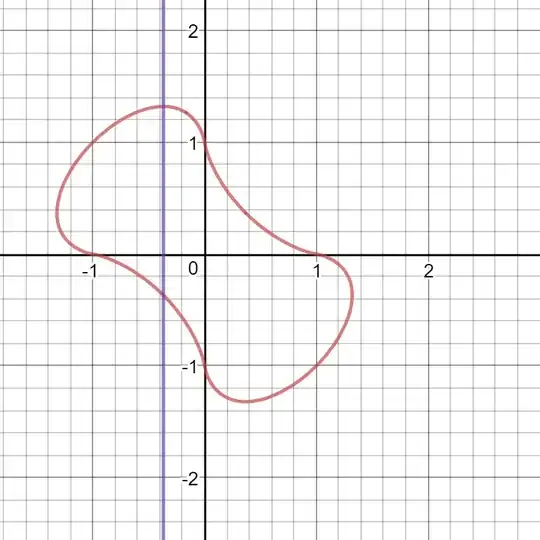EDITED: Some of the questions are ansered, some aren't.
EDITED: In order not to make this post too long, I posted another post which consists of more questions.
Let $f$ be (almost) the implicit curve$$|x|^x=|y|^y$$ See the graph of the particularly interesting dog bone-shaped curve below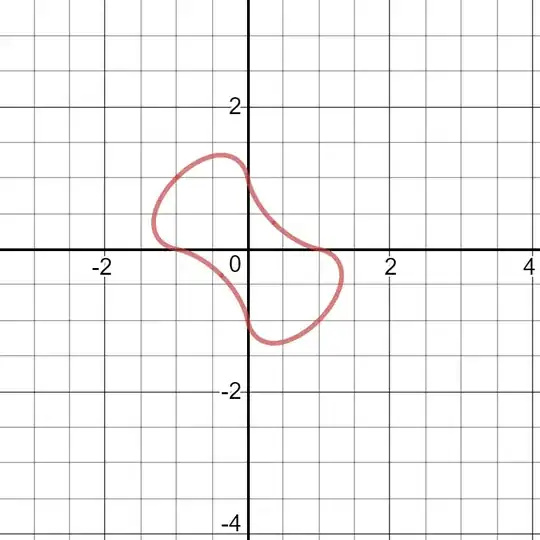 Obviously, the graph should contains the line $x=y$.
Obviously, the graph should contains the line $x=y$.
However, what I want $f$ to be, is, the graph $|x|^x=|y|^y$, without line $x=y$, but nevertheless contains the two points which the curve intersect with $x=y$. Note that the convention $0^0=1$, maybe not as usaul.
Clearly $f$ is not a function.
I doesn't have any idea about continuity, derivative, integral, and many other important technique, apply on an implicit curve.
However, I does want to ask:
$1$) How to write $f$ in an rigorous way? (How to represents 'the intersection of the curve with $x=y$, as the line $x=y$ is originally contains in the curve?)
$2$) Is $f$ continuous?(What does it means to be a continuous implicit curve? Is it smooth?)
$3$) How can we break it down into several functions so that we can use the properties of functions?
$4$)[ANSWERED] Can we find the area (maybe not 'integral', since in definition to Riemann-integral, integral under x-axis is negative, but clearly area can't be negative) surrounding by the curve $f$? Or does it make any sense to say the area of an implicit curve? Is there a strict definition? From wikipedia, maybe we need to show that it is Jordan curve? (Thanks, Peter Heinig, in the comment.
Answer: By Barry Cipra, the integral is $3.527\dots$.
$5$) Given a straight line, at most how many points can the line intersects $f$? I believe the answer is 4, as an example, $y=-x-1$. Moreover, what if the line is in the form $y=a$,while $a\in\mathbb R$? I believe is 2. See the image below,
for some example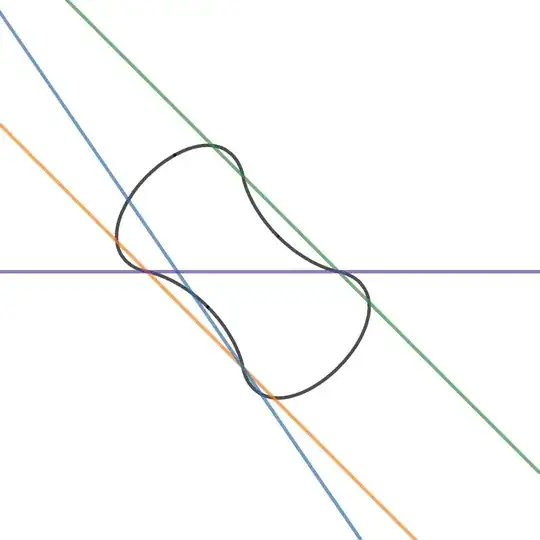
$6$) Where are the extrema of $f$,
a) in the normal sense,
b) when we take $x=y$ as the $x$-axis,
c) when we take $x=-y$ as the $x$-axis?
$7$) What is the intersections of the curve with,
a) $x=y$, (ANSWERED by Rahul)
b) $x=-y$, (ANSWERED)
If $x>0$ and $x=−y$, then we get $x^x=x^{−x}$,$x^{2x}=1$,$x=1$,$y=−1$, and similarly for $x<0$ we get $x=−1,y=1$. This answers 7b. – Wojowu
- c) $x$-axis? (ANSWERED)
$8$)
a) What is the circumscribed circle to the curve $f$? (I think that it may be $x^2+y^2=2$)
b) What is the inscribed circle to the curve $f$?
$\space\space\space$(I observed by trial and error that it may be $x^2+y^2=a$
$\space\space\space$while $a\approx 0.27067056\approx\frac{1352}{4995}$, see the image below)
9)[ANSWERED]
Perhaps we should restrict our attention to $x^x=y^y$, consider the part of $f$ which is in the first quadrant (including positive x and y axes),see the image below, the red curve. How can we find the integral of it on [0,1](How can we write it in a more convenient form?) I observed that the integral should be $\gt 1-\frac{\pi}{4}$(See the image below) and $\lt \frac{1}{2}$, perhaps, $\frac{e}{10}$?.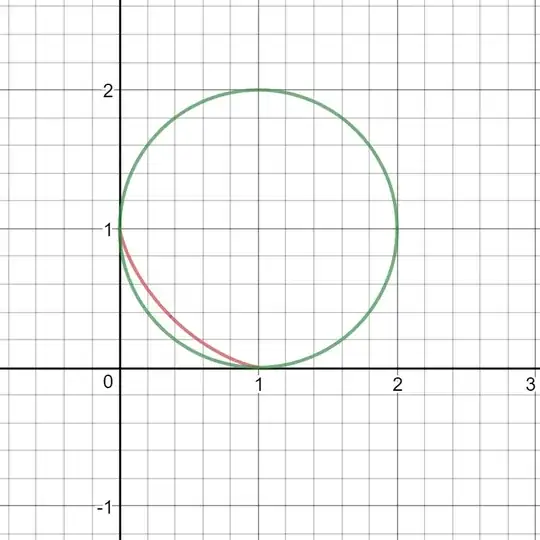
Answer: By Yuriy S, the integral is $0.317\dots$.
10)Is the locus, when $f$ is rotated around the origin, the area between the two concentric circles $x^2+y^2=2$ and $x^2+y^2=\frac{2}{e^2}$? See the image and here. The equations of the graph:
The equations of the graph:
Using rotation matrix, as mentioned in Yuriy S's answer,
Define a paremeter $a$, as the rotation degree measures in radian (clockwise),
$f$, after rotation, is $$\left|x\cdot\cos a-y\sin a\right|^{x\cdot\cos a-y\sin a}=\left|x\sin a+y\cos a\right|^{x\sin a+y\cos a}$$ For$$\space x\cdot\cos a-y\sin a\neq x\sin a+y\cos a$$Of course, there are two points more.
Does it helps to prove that $f$ is continuous, i.e., question 2 above?
NOTE: To interpret the graph with Desmos, we need to consider two cases, namely, $\space x\cdot\cos a-y\sin a<x\sin a+y\cos a$ and $\space x\cdot\cos a-y\sin a> x\sin a+y\cos a$ respectively, see the link above.
I need really to apologize that I really doesn't have any idea to answer. I am not presently familar with implicit curve, but only a little knowledge about real analysis. However, I ask it because I think it is interesting. Moreover, it is good for an easy answer, but it is not neccesary that the answer should be very elementary, since knowing how the question can be solve by wonderful mathematical techniques is itself interesting. Welcome for any answer, even not as a complete answer to all 10 questions.
Thanks for answering my naive questions!
Sorry for a new question, but I really like to ask :)

